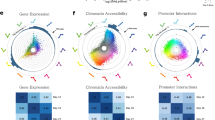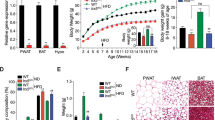Abstract
Genome-wide association studies have revealed that single nucleotide polymorphisms in fat mass and obesity-associated transcript (FTO) are robustly associated with body mass index and obesity. Expression of Fto in the hypothalamic arcuate nucleus is bidirectionally regulated as a function of nutritional status; decreasing following a 48-h fast and increasing after 10-week exposure to a high-fat diet. Here, we utilize an in vitro approach to determine which nutrients could regulate FTO levels at a cellular level. Using mouse and human cell lines, we find that FTO levels are not influenced by serum starvation. We demonstrate, however, that both glucose and total amino-acid deprivation regulates FTO expression. In particular, we have found that FTO mRNA and protein levels are dramatically downregulated by total amino-acid deprivation in mouse hypothalamic N46 cells, mouse embryonic fibroblasts and in human HEK293 cells. The drop rate of Fto mRNA is faster than its rate of natural degradation, pointing to regulation at the transcriptional level, which is reversible upon amino-acid replacement. Strikingly, this downregulation was seen only with essential amino-acid deficiency and not nonessential amino acids. These data suggest that FTO might have a role in the sensing of essential amino-acid availability.
This is a preview of subscription content, access via your institution
Access options
Subscribe to this journal
Receive 12 print issues and online access
$259.00 per year
only $21.58 per issue
Buy this article
- Purchase on Springer Link
- Instant access to full article PDF
Prices may be subject to local taxes which are calculated during checkout


Similar content being viewed by others
References
Frayling TM, Timpson NJ, Weedon MN, Zeggini E, Freathy RM, Lindgren CM et al. A common variant in the FTO gene is associated with body mass index and predisposes to childhood and adult obesity. Science 2007; 316: 889–894.
Gerken T, Girard CA, Tung YC, Webby CJ, Saudek V, Hewitson KS et al. The obesity-associated FTO gene encodes a 2-oxoglutarate-dependent nucleic acid demethylase. Science 2007; 318: 1469–1472.
Jia G, Yang CG, Yang S, Jian X, Yi C, Zhou Z et al. Oxidative demethylation of 3-methylthymine and 3-methyluracil in single-stranded DNA and RNA by mouse and human FTO. FEBS Lett 2008; 582: 3313–3319.
Jia G, Fu Y, Zhao X, Dai Q, Zheng G, Yang Y et al. N6-methyladenosine in nuclear RNA is a major substrate of the obesity-associated FTO. Nat Chem Biol 2011; 7: 885–887.
Fischer J, Koch L, Emmerling C, Vierkotten J, Peters T, Bruning JC et al. Inactivation of the Fto gene protects from obesity. Nature 2009; 458: 894–898.
Boissel S, Reish O, Proulx K, Kawagoe-Takaki H, Sedgwick B, Yeo GS et al. Loss-of-function mutation in the dioxygenase-encoding FTO gene causes severe growth retardation and multiple malformations. Am J Hum Genet 2009; 85: 106–111.
Tung YC, Ayuso E, Shan X, Bosch F, O'Rahilly S, Coll AP et al. Hypothalamic-specific manipulation of Fto, the ortholog of the human obesity gene FTO, affects food intake in rats. PLoS One 2010; 5: e8771.
Church C, Lee S, Bagg EA, McTaggart JS, Deacon R, Gerken T et al. A mouse model for the metabolic effects of the human fat mass and obesity associated FTO gene. PLoS Genet 2009; 5: e1000599.
Church C, Moir L, McMurray F, Girard C, Banks GT, Teboul L et al. Overexpression of Fto leads to increased food intake and results in obesity. Nat Genet 2010; 42: 1086–1092.
Gao X, Shin YH, Li M, Wang F, Tong Q, Zhang P . The fat mass and obesity associated gene FTO functions in the brain to regulate postnatal growth in mice. PLoS One 2010; 5: e14005.
Gietzen DW . Neural mechanisms in the responses to amino acid deficiency. J Nutr 1993; 123: 610–625.
Harper AE, Benevenga NJ, Wohlhueter RM . Effects of ingestion of disproportionate amounts of amino acids. Physiol Rev 1970; 50: 428–558.
Koehnle TJ, Russell MC, Gietzen DW . Rats rapidly reject diets deficient in essential amino acids. J Nutr 2003; 133: 2331–2335.
Harding HP, Zhang Y, Zeng H, Novoa I, Lu PD, Calfon M et al. An integrated stress response regulates amino acid metabolism and resistance to oxidative stress. Mol Cell 2003; 11: 619–633.
Kilberg MS, Pan YX, Chen H, Leung-Pineda V . Nutritional control of gene expression: how mammalian cells respond to amino acid limitation. Annu Rev Nutr 2005; 25: 59–85.
Kilberg MS, Shan J, Su N . ATF4-dependent transcription mediates signaling of amino acid limitation. Trends Endocrinol Metab 2009; 20: 436–443.
Zhang P, McGrath BC, Reinert J, Olsen DS, Lei L, Gill S et al. The GCN2 eIF2alpha kinase is required for adaptation to amino acid deprivation in mice. Mol Cell Biol 2002; 22: 6681–6688.
Kimball SR, Jefferson LS . Molecular mechanisms through which amino acids mediate signaling through the mammalian target of rapamycin. Curr Opin Clin Nutr Metab Care 2004; 7: 39–44.
Palii SS, Kays CE, Deval C, Bruhat A, Fafournoux P, Kilberg MS . Specificity of amino acid regulated gene expression: analysis of genes subjected to either complete or single amino acid deprivation. Amino Acids 2009; 37: 79–88.
Lee JI, Dominy JE, Sikalidis AK, Hirschberger LL, Wang W, Stipanuk MH . HepG2/C3A cells respond to cysteine deprivation by induction of the amino acid deprivation/integrated stress response pathway. Physiol Genomics 2008; 33: 218–229.
Acknowledgements
This study was supported by the UK Medical Research Council Center for Obesity and Related Metabolic Disorders (MRC-CORD), the EU FP7-HEALTH-2009-241592 EurOCHIP and EU FP7-HEALTH-266408 (Full4Health).
Author information
Authors and Affiliations
Corresponding author
Ethics declarations
Competing interests
The authors declare no conflict of interest.
Additional information
Supplementary Information accompanies the paper on International Journal of Obesity website
Supplementary information
Rights and permissions
About this article
Cite this article
Cheung, M., Gulati, P., O'Rahilly, S. et al. FTO expression is regulated by availability of essential amino acids. Int J Obes 37, 744–747 (2013). https://doi.org/10.1038/ijo.2012.77
Received:
Revised:
Accepted:
Published:
Issue Date:
DOI: https://doi.org/10.1038/ijo.2012.77
Keywords
This article is cited by
-
N6-methyladenosine methylation in kidney injury
Clinical Epigenetics (2023)
-
The genetics of obesity: from discovery to biology
Nature Reviews Genetics (2022)
-
N6-methyladenosine and Neurological Diseases
Molecular Neurobiology (2022)
-
Current insights into the implications of m6A RNA methylation and autophagy interaction in human diseases
Cell & Bioscience (2021)
-
N6-methyladenosine demethyltransferase FTO-mediated autophagy in malignant development of oral squamous cell carcinoma
Oncogene (2021)



